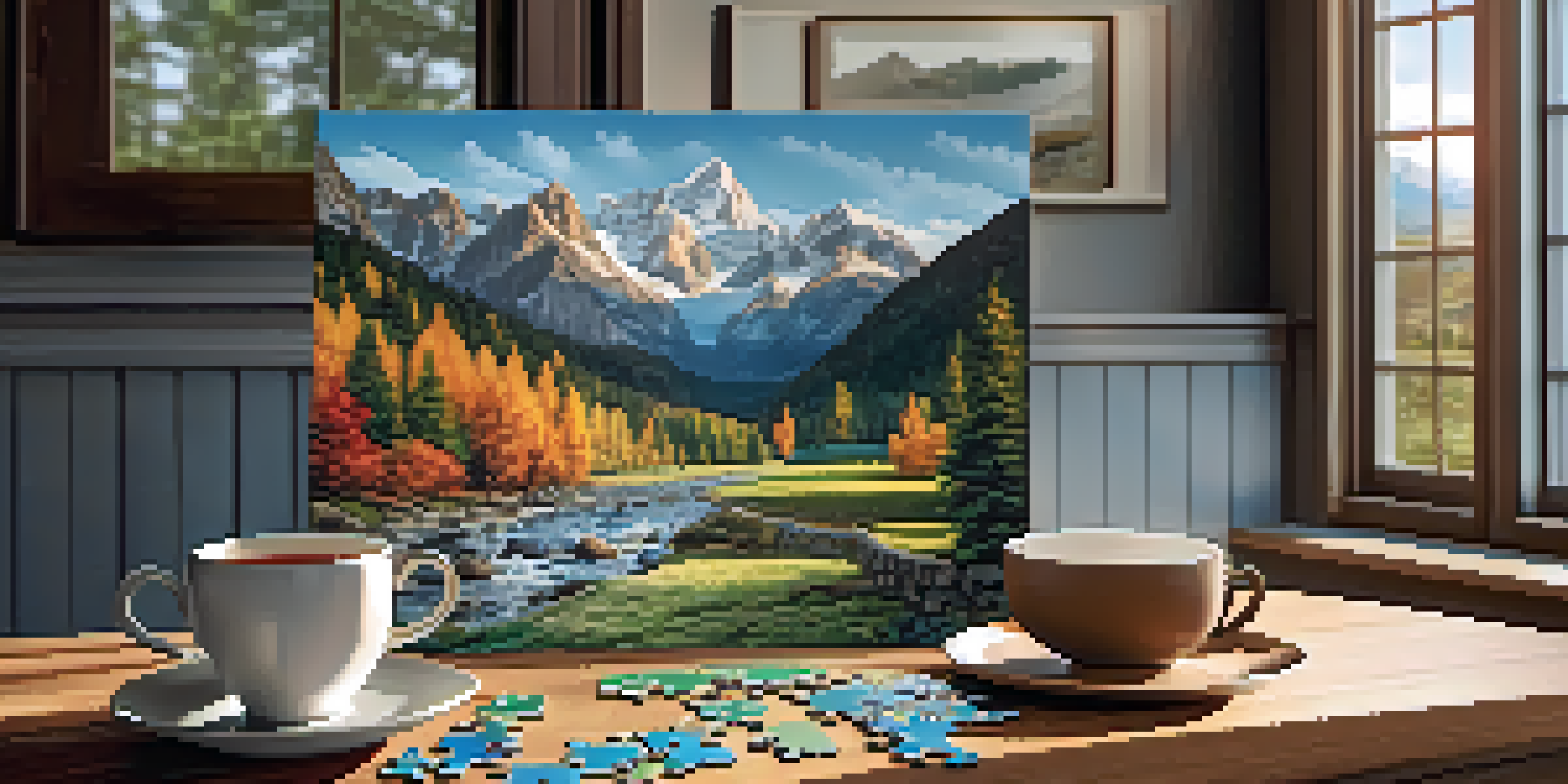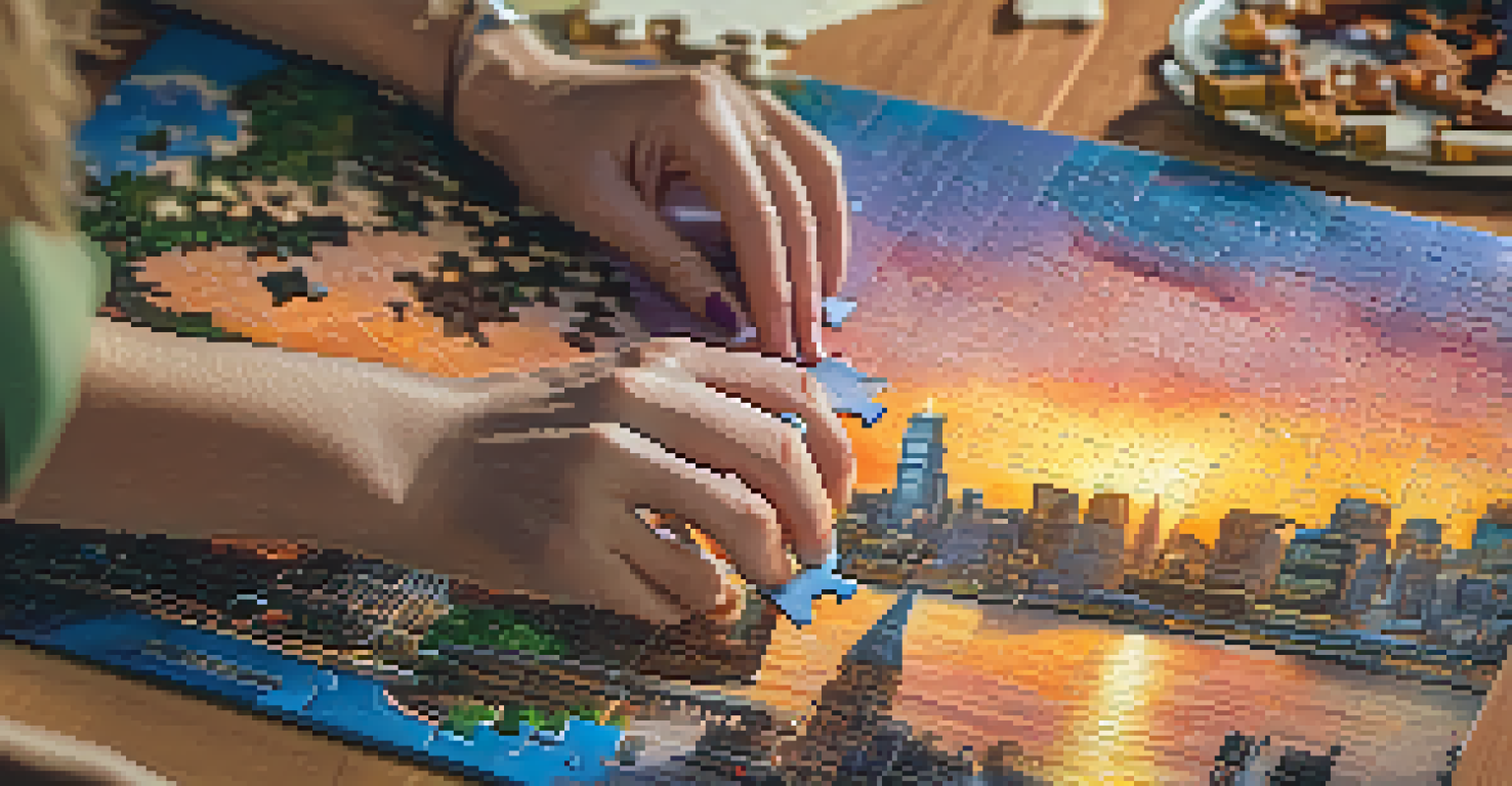Navigating Puzzle Sizes: Choosing the Right One for You

Understanding Puzzle Sizes: What Do They Mean?
When it comes to puzzles, size matters! The term 'puzzle size' typically refers to the number of pieces in a puzzle. This can range from small puzzles with just a few pieces aimed at young children, to thousands of pieces that challenge even the most seasoned puzzlers.
Life is a puzzle, and each piece is significant in its own way.
Understanding the size of a puzzle can help you gauge how long it might take to complete. For instance, a 500-piece puzzle might take a few hours, while a 2000-piece puzzle could span several days, depending on your experience level and how much time you devote to it.
Think of puzzle sizes like the difference between a light snack and a full meal. Just as you wouldn't tackle a massive feast without some preparation, it's wise to choose a puzzle size that matches your current mood and skill level.
Skill Level: Picking the Right Size for You
Your skill level plays a significant role in determining what size puzzle you should tackle. If you’re a beginner, starting with 100 to 300 pieces can make the experience enjoyable without feeling overwhelming.

As you gain confidence and skill, you might find yourself ready to jump into larger puzzles. For instance, once you're comfortable with 500 pieces, a 1000-piece puzzle might be a thrilling next challenge.
Choose Puzzle Size Wisely
Understanding the number of pieces in a puzzle can help you select one that matches your skill level and time availability.
Remember, though, that everyone learns at their own pace. Just like learning to ride a bike, some may zoom ahead while others take their time, so choose a size that feels right for you, not just what others are doing.
Time Commitment: How Much Time Can You Dedicate?
Before choosing a puzzle size, consider how much time you’re willing to invest. If you only have an hour or two, a smaller puzzle can be a satisfying, quick project.
The journey of a thousand miles begins with one step.
On the other hand, if you have a weekend free or a cozy evening planned, a larger puzzle can be a great way to unwind and keep your mind engaged. It’s like choosing between a quick jog and a long hike; both are enjoyable but require different time commitments.
Ultimately, the size of your puzzle should align with your availability. Choose a size that allows you to fully immerse yourself in the experience without feeling rushed or overwhelmed.
Personal Preferences: What Do You Enjoy Most?
Everyone has different preferences when it comes to puzzles. Some enjoy the challenge of larger puzzles, while others find satisfaction in completing smaller ones quickly.
Think about what you find most enjoyable. Do you like the satisfaction of finishing a puzzle in one sitting, or do you prefer the gradual build-up of a larger project that you can return to over days or weeks?
Personal Preferences Matter
Your enjoyment of puzzles is influenced by personal preferences, which can guide you in choosing the right size and theme.
Your personal likes and dislikes can guide your decision on puzzle size. After all, puzzling should be a fun and fulfilling activity, tailored to what brings you joy.
Theme and Image: How Do They Affect Size Choice?
The theme and image of a puzzle can also influence your choice of size. A stunning landscape image might inspire you to tackle a bigger puzzle, while a simple, colorful illustration can be just as enjoyable in a smaller size.
Consider what captivates you. If you love intricate details, a larger puzzle might allow you to appreciate the finer points, while a simpler image might be better suited for a quick project.
Choosing a puzzle based on its theme can enhance your experience, making each piece you place feel worthwhile, regardless of the size.
Setting Up Your Puzzle Space: Size Matters!
Before you dive into your puzzle, think about the space you have available. Larger puzzles will obviously require more room, so make sure you have a dedicated area where you can spread out your pieces.
It’s important to have a comfortable and organized space. A table that’s too small can lead to frustration as pieces spill over, while a larger area allows you to work without feeling cramped.
Create a Comfortable Setup
Having an organized and spacious area for your puzzle can enhance your experience and make it more enjoyable.
Setting up your puzzle space thoughtfully is like preparing a workspace for a big project; the right environment can make all the difference in your enjoyment and success.
Trial and Error: Finding Your Perfect Puzzle Size
Finding the right puzzle size can take some experimentation. Don’t be afraid to try different sizes to see what resonates with you. If a 1000-piece puzzle feels too daunting, scale back and try something smaller.
On the flip side, if you find yourself breezing through smaller puzzles, it might be time to challenge yourself with a larger one. Just remember, each puzzle completed adds to your experience, regardless of size.

Ultimately, the journey is what matters. Embrace the trial and error process, and you may discover your new favorite puzzle size along the way.